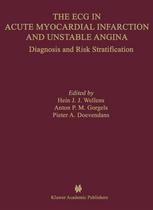

Most ebook files are in PDF format, so you can easily read them using various software such as Foxit Reader or directly on the Google Chrome browser.
Some ebook files are released by publishers in other formats such as .awz, .mobi, .epub, .fb2, etc. You may need to install specific software to read these formats on mobile/PC, such as Calibre.
Please read the tutorial at this link: https://ebookbell.com/faq
We offer FREE conversion to the popular formats you request; however, this may take some time. Therefore, right after payment, please email us, and we will try to provide the service as quickly as possible.
For some exceptional file formats or broken links (if any), please refrain from opening any disputes. Instead, email us first, and we will try to assist within a maximum of 6 hours.
EbookBell Team

4.1
50 reviewsThe electrocardiogram (ECG) remains the most accessible and inexpensive diagnostic tool to evaluate the patient presenting with symptoms suggestive of acute myocardial ischemia. It plays a crucial role in decision making about the aggressiveness of therapy especially in relation to reperfusion therapy, because such therapy has resulted in a considerable reduction in mortality from acute myocardial infarction. Several factors play a role in the amount of myocardial tissue that can be salvaged by reperfusion therapy, such as the time interval between onset of coronary occlusion and reperfusion, site and size of the jeopardized area, type of reperfusion attempt (thrombolytic agent or an intracoronary catheter intervention), presence or absence of risk factors for thrombolytic agents, etc. Most important in decision making on reperfusion therapy and the type of intervention is to look for markers indicating a higher mortality rate from myocardial infarction. The ECG is a reliable, inexpensive, non-invasive instrument to obtain that information. Recently it has become clear that both in anterior and inferior myocardial infarction, the ECG frequently allows not only to identify the infarct related coronary artery, but also the site of occlusion in that artery and therefore the size of the jeopardized area. Obviously, the more proximal the occlusion, the larger the area at risk and the more aggressive the reperfusion attempt.